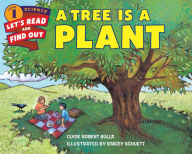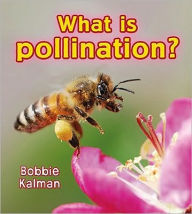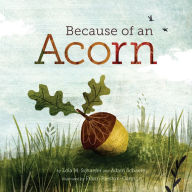Debbie Miller has written many acclaimed children's books, including Arctic Lights, Arctic Nights. She lives in Fairbanks, Alaska.
Stacey Schuett has illustrated many popular books for children, including her own Somewhere in the World Right Now. From her studio window, she enjoys a view of her backyard, home to many oak, redwood, and fruit trees. Stacey lives in Northern California.
Are Trees Alive?
Hardcover
- ISBN-13: 9780802788016
- Publisher: Bloomsbury USA
- Publication date: 01/28/2003
- Pages: 32
- Product dimensions: 8.70(w) x 11.10(h) x 0.40(d)
- Lexile: 640L (what's this?)
- Age Range: 4 - 8 Years
.
"Are trees alive? How do they breathe? They don't have noses."
And so begins a conversation between the author and her daughter that leads to a remarkable discovery: Trees are like children in so many ways! They may look very different from people, but trees have roots that hold them to the ground like feet and leaves that blow in the wind like hair. Their bark even comes in different colors, just like our skin.
From this poetic comparison of plants and humans, readers will learn how trees live and grow, and how they get their food. They will learn about the baobab trees of Africa, the banyan trees of India, and the bristlecone pines of California. They will see, through Stacey Schuett's exquisite art, that trees come in all shapes and sizes-just like people-and provide a home to many different animals. But most of all, they will look at trees with greater respect and a bit of awe, after realizing that trees are alive too.
Customers Who Bought This Item Also Bought
-
- Plants Can't Sit Still
- by Rebecca Hirsch
-
- From Seed to Plant
- by Gail GibbonsGail Gibbons
-
- Living Sunlight: How Plants…
- by Molly BangPenny Chisholm
-
- A Tree Is a Plant
- by Clyde Robert BullaStacey Schuett
-
- Tell Me, Tree: All about Trees…
- by Gail Gibbons
-
- What Is Pollination?
- by Bobbie Kalman
-
- Plant Secrets
- by Emily GoodmanPhyllis Limbacher Tildes
-
- Because of an Acorn
- by Lola M. SchaeferAdam SchaeferFrann Preston-Gannon
-
- Animals That Make Me Say Wow! …
- by Dawn Cusick
-
- Buried Sunlight: How Fossil…
- by Molly BangPenny Chisholm
-
- Ocean Sunlight: How Tiny…
- by Molly BangPenny Chisholm
-
- How the World Works: A…
- by Christian DorionBeverley Young
-
- Frog Song
- by Brenda Z. GuibersonGennady Spirin
-
- Mountain Dance
- by Thomas LockerThomas Locker
-
- Who Will Plant a Tree?
- by Jerry PallottaTom Leonard
-
- What Makes a Monster?:…
- by Jess Keating
Recently Viewed
— Ken Marantz and Sylvia Marantz

















